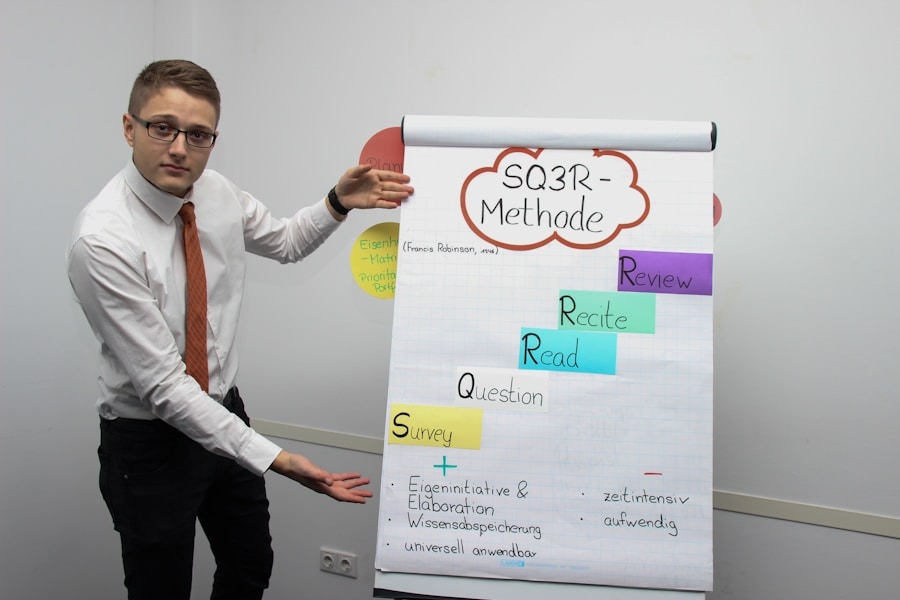Confidence plays a pivotal role in the effectiveness of paper presentations. When a presenter exudes confidence, it not only enhances their credibility but also captivates the audience’s attention. A confident speaker is more likely to engage listeners, making complex ideas more accessible and relatable.
This is particularly crucial in academic and professional settings where the stakes can be high, and the audience’s perception can significantly influence the reception of the presented material.
The ability to communicate with confidence can transform a presentation from a mere recitation of facts into a compelling narrative that resonates with the audience.
Moreover, confidence can mitigate the anxiety that often accompanies public speaking. Many individuals experience a surge of nervousness before presenting, which can detract from their performance. However, when a presenter approaches their topic with self-assurance, they are better equipped to manage their nerves and focus on delivering their message effectively.
This self-assuredness not only benefits the presenter but also creates a more positive atmosphere for the audience. When listeners perceive a speaker as confident, they are more likely to trust the information being shared and engage with the content on a deeper level. Thus, cultivating confidence is not merely about personal comfort; it is an essential component of effective communication that can significantly impact the overall success of a presentation.
Key Takeaways
- Confidence is crucial for successful paper presentations as it helps to engage the audience and convey authority on the topic.
- Overcoming nervousness and building confidence can be achieved through preparation, positive self-talk, and visualization techniques.
- Engaging the audience and maintaining confidence can be done through eye contact, storytelling, and interactive elements in the presentation.
- Body language and vocal delivery play a significant role in projecting confidence, including posture, gestures, and tone of voice.
- Handling questions and challenges with confidence during paper presentations requires active listening, staying calm, and being prepared to address any uncertainties.
- Practicing and rehearsing the presentation multiple times can significantly boost confidence and familiarity with the material.
Tips for Overcoming Nervousness and Building Confidence
Overcoming nervousness is a common challenge for many presenters, but there are several strategies that can help build confidence. One effective approach is thorough preparation. Familiarity with the material can significantly reduce anxiety levels.
By understanding the content inside and out, presenters can anticipate questions and challenges, which fosters a sense of control over the situation. This preparation should include not only mastering the subject matter but also practicing the delivery multiple times. Rehearsing in front of a mirror or recording oneself can provide valuable insights into body language and vocal delivery, allowing presenters to refine their performance before facing an audience.
Another useful technique is visualization. Many successful speakers use visualization to imagine themselves delivering a flawless presentation.
By picturing themselves confidently engaging with the audience, presenters can cultivate a positive mindset that translates into real-life performance. Additionally, incorporating relaxation techniques such as deep breathing or mindfulness exercises before stepping onto the stage can help calm nerves and center focus. These practices not only prepare the mind but also create a physical sense of ease that can enhance overall presentation quality.
Techniques for Engaging Your Audience and Maintaining Confidence

Engaging an audience is crucial for maintaining confidence during a presentation. One effective technique is to start with a strong opening that captures attention immediately. This could be an intriguing question, a surprising statistic, or a relevant anecdote that relates to the topic at hand.
By drawing the audience in from the outset, presenters can establish a connection that fosters engagement throughout the presentation. For example, a speaker discussing climate change might begin with a personal story about witnessing extreme weather events, thereby humanizing the issue and prompting emotional investment from listeners. In addition to a compelling opening, interactive elements can significantly enhance audience engagement.
Incorporating questions or prompts for audience participation encourages listeners to become active participants rather than passive recipients of information. This interaction not only keeps the audience attentive but also provides opportunities for presenters to gauge interest and adjust their delivery accordingly. For instance, asking for a show of hands on a particular issue can create a dynamic atmosphere and reinforce the presenter’s confidence as they see their audience responding positively.
Furthermore, using visual aids such as slides or videos can help maintain interest and provide additional context for complex ideas, allowing presenters to feel more secure in their delivery.
The Power of Body Language and Vocal Delivery in Projecting Confidence
Body language is an essential component of effective communication and plays a significant role in projecting confidence during presentations. A presenter’s posture, gestures, and facial expressions can convey authority and engagement far beyond spoken words. Standing tall with an open posture signals confidence and invites trust from the audience.
Conversely, slouching or crossing arms may suggest insecurity or defensiveness, which can undermine the message being delivered. Effective use of gestures can also enhance communication; for instance, using hand movements to emphasize key points can make the presentation more dynamic and engaging. Vocal delivery is equally important in projecting confidence.
The tone, pace, and volume of speech can significantly influence how an audience perceives a presenter’s authority on a subject. Speaking clearly and at an appropriate volume ensures that all audience members can hear and understand the content being presented. Varying vocal pitch and pace can also help maintain interest; monotonous delivery often leads to disengagement.
Practicing vocal techniques such as pausing for emphasis or modulating tone can enhance overall delivery and reinforce confidence. A presenter who speaks with conviction is more likely to inspire trust and respect from their audience.
Handling Questions and Challenges with Confidence during Paper Presentations
Handling questions during a presentation can be daunting, yet it is an opportunity to demonstrate expertise and confidence. Anticipating potential questions beforehand allows presenters to prepare thoughtful responses, which can alleviate anxiety when faced with inquiries from the audience. It is beneficial to view questions as a dialogue rather than an interrogation; this perspective shift can help presenters approach inquiries with curiosity rather than defensiveness.
For example, if an audience member challenges a point made during the presentation, responding with openness—acknowledging their perspective while providing evidence-based counterarguments—can showcase both confidence and professionalism. Moreover, maintaining composure during challenging moments is crucial for projecting confidence. If faced with an unexpected question or criticism, taking a moment to collect thoughts before responding can demonstrate poise under pressure.
Acknowledging when one does not have an immediate answer is also acceptable; offering to follow up after the presentation shows commitment to thoroughness and respect for the audience’s inquiries. This approach not only reinforces credibility but also fosters an environment where open dialogue is encouraged, further enhancing the overall presentation experience.
Practicing and Rehearsing to Boost Confidence in Paper Presentations

Refining Delivery and Identifying Areas for Improvement
Regular practice is essential for building confidence when it comes to paper presentations. Through repeated rehearsal, presenters can refine their delivery, identify areas that need improvement, and become more comfortable with their material. Practicing in front of peers or mentors provides valuable feedback that helps presenters adjust their content or style based on constructive criticism.
Enhancing Preparation with Varied Rehearsal Techniques
Incorporating varied rehearsal techniques can further enhance preparation efforts. For instance, simulating real presentation conditions, such as using visual aids or practicing in front of an audience, can help presenters acclimate to the environment they will face on presentation day. This iterative process not only enhances the quality of the presentation but also instills greater self-assurance as presenters become more familiar with their material.
Self-Reflection and Feedback: The Key to Confidence
Recording practice sessions allows individuals to review their performance critically, observing body language, vocal delivery, and pacing while identifying strengths and weaknesses in their presentation style. By dedicating time to practice and actively seeking improvement through feedback and self-reflection, presenters can significantly boost their confidence levels, leading to more impactful presentations that resonate with audiences.
If you are interested in delving deeper into philosophical concepts related to confidence and self-assurance, you may want to check out this article on Vedanta Philosophy: Exploring the Nature of Reality and Human Existence. This article explores the profound teachings of Vedanta philosophy, shedding light on the nature of reality and the essence of human existence. By understanding these philosophical concepts, you may be able to enhance your confidence and presentation skills even further.
FAQs
What are paper presentations?
Paper presentations are a form of academic or professional presentation where a speaker presents a research paper or a topic to an audience. These presentations are commonly given at conferences, seminars, or in academic settings.
How can I nail a paper presentation with confidence?
To nail a paper presentation with confidence, it is important to thoroughly prepare and practice your presentation. This includes understanding the content, organizing your thoughts, and rehearsing your delivery. Additionally, it can be helpful to engage with the audience, maintain good posture, and use confident body language.
What are some tips for delivering a successful paper presentation?
Some tips for delivering a successful paper presentation include knowing your audience, using visual aids effectively, speaking clearly and at a moderate pace, and being prepared to answer questions. It is also important to maintain eye contact, use engaging language, and to be enthusiastic about your topic.
How can I overcome nervousness when giving a paper presentation?
To overcome nervousness when giving a paper presentation, it can be helpful to practice deep breathing and relaxation techniques. Additionally, focusing on the content of your presentation and reminding yourself of your expertise on the topic can help boost confidence. It can also be beneficial to visualize a successful presentation and to reframe nervousness as excitement.






















+ There are no comments
Add yours